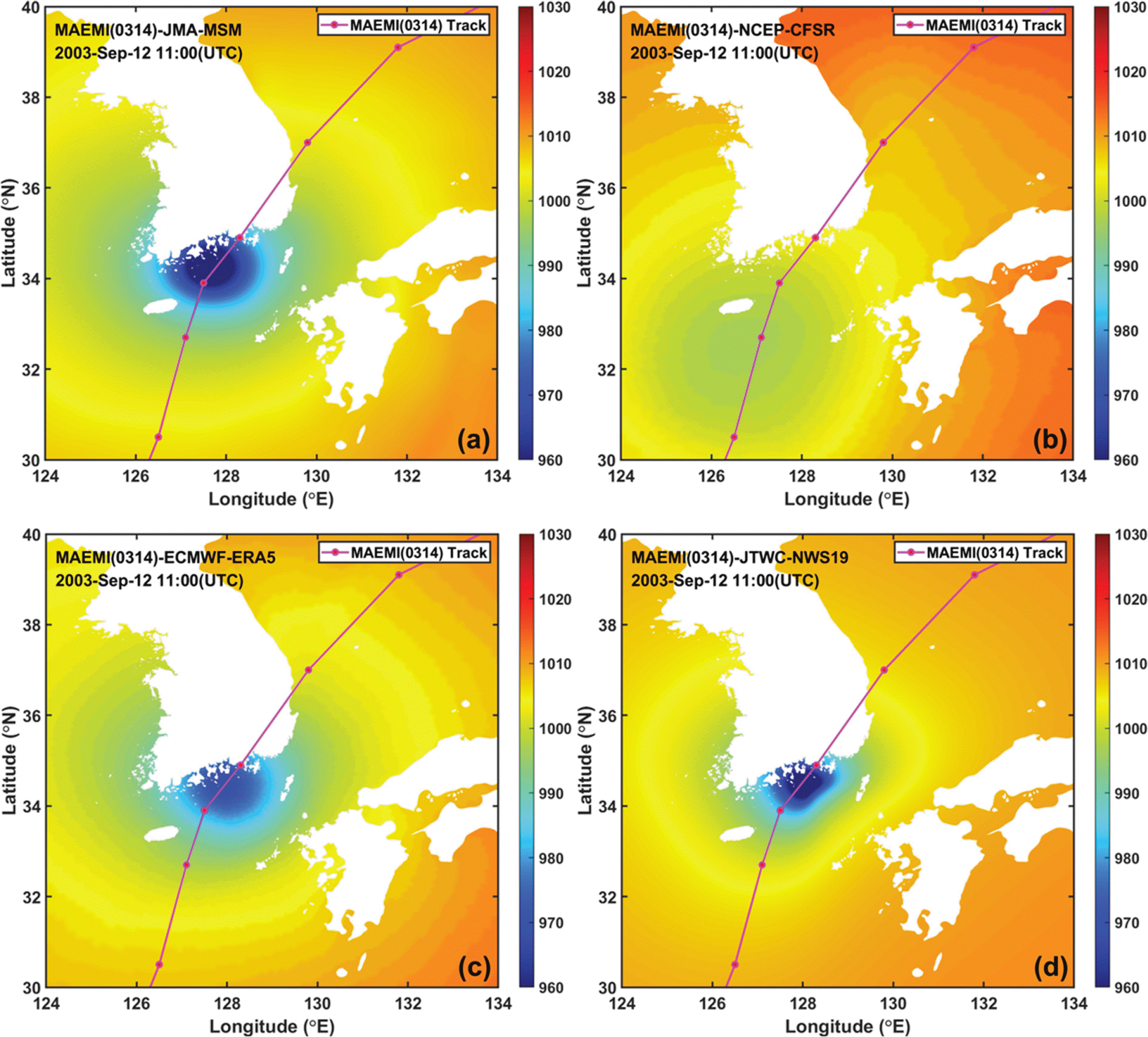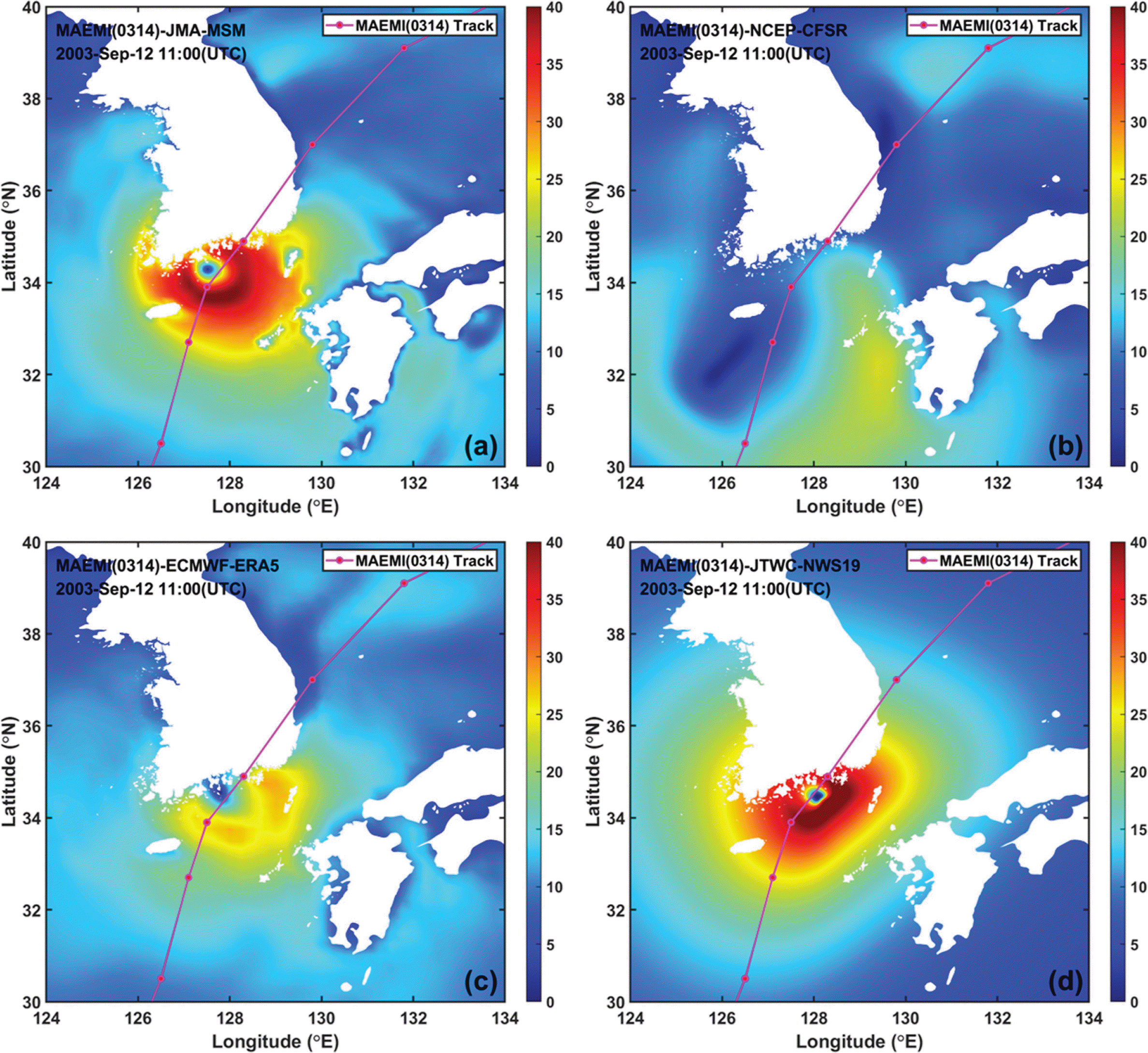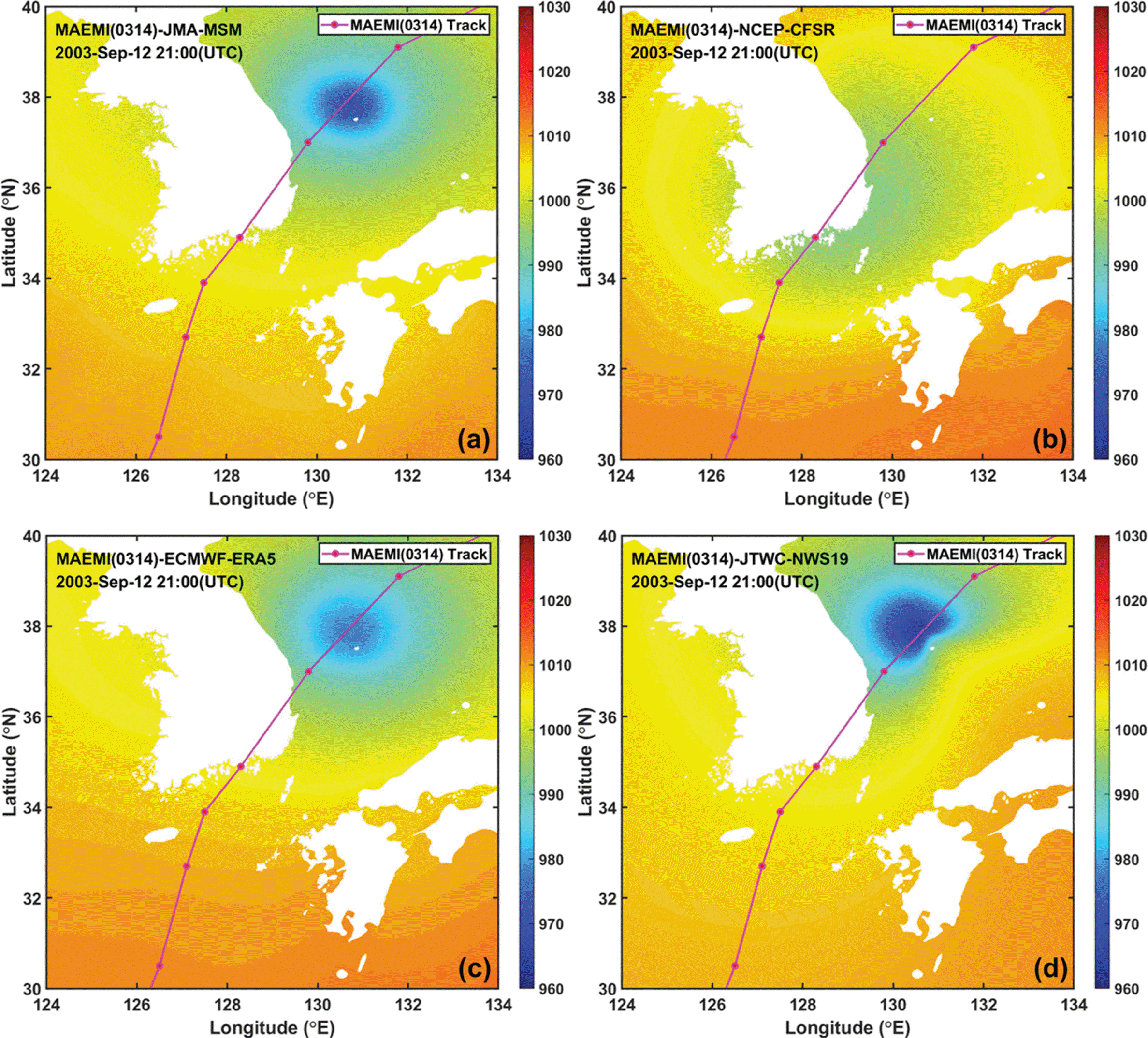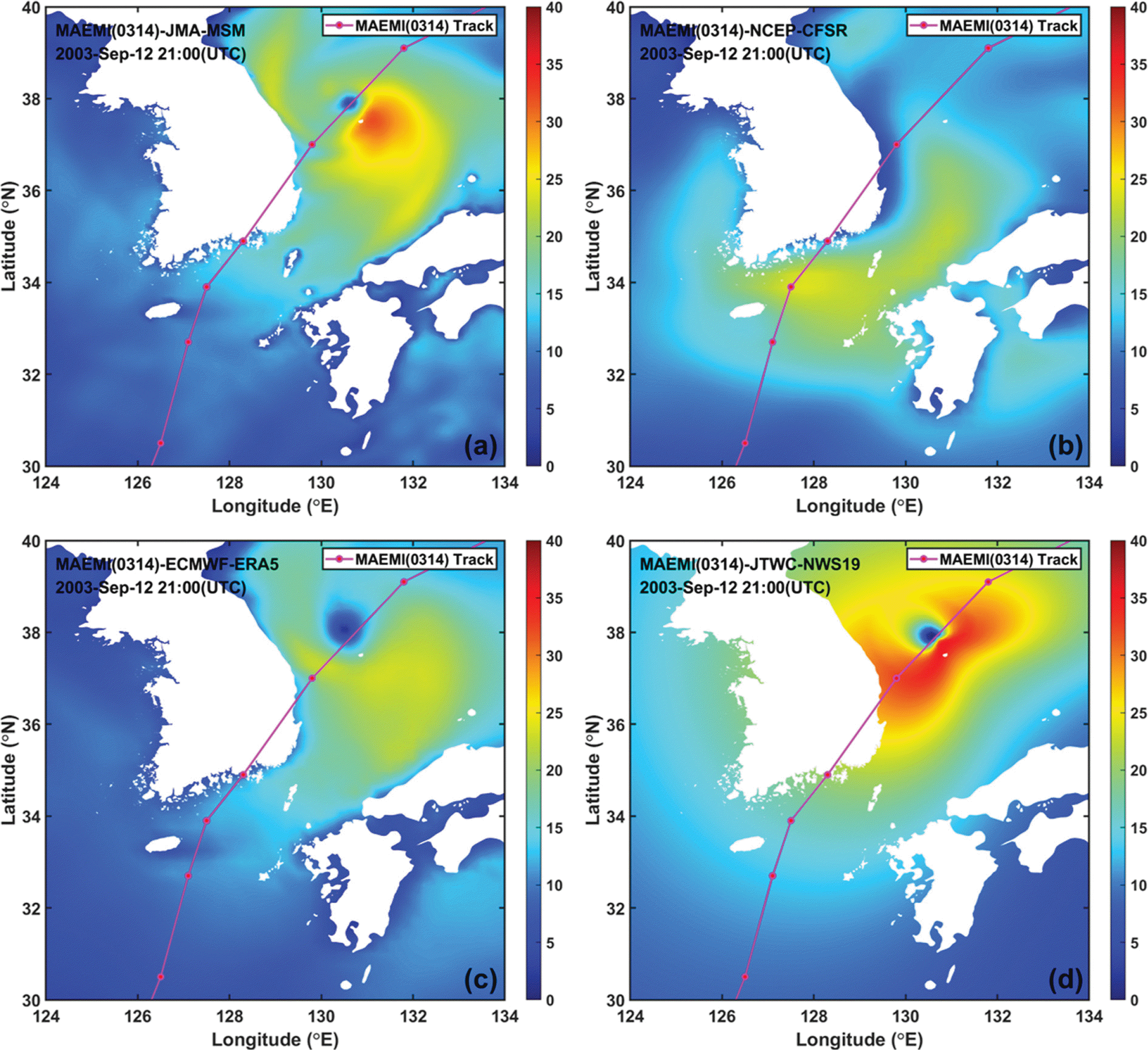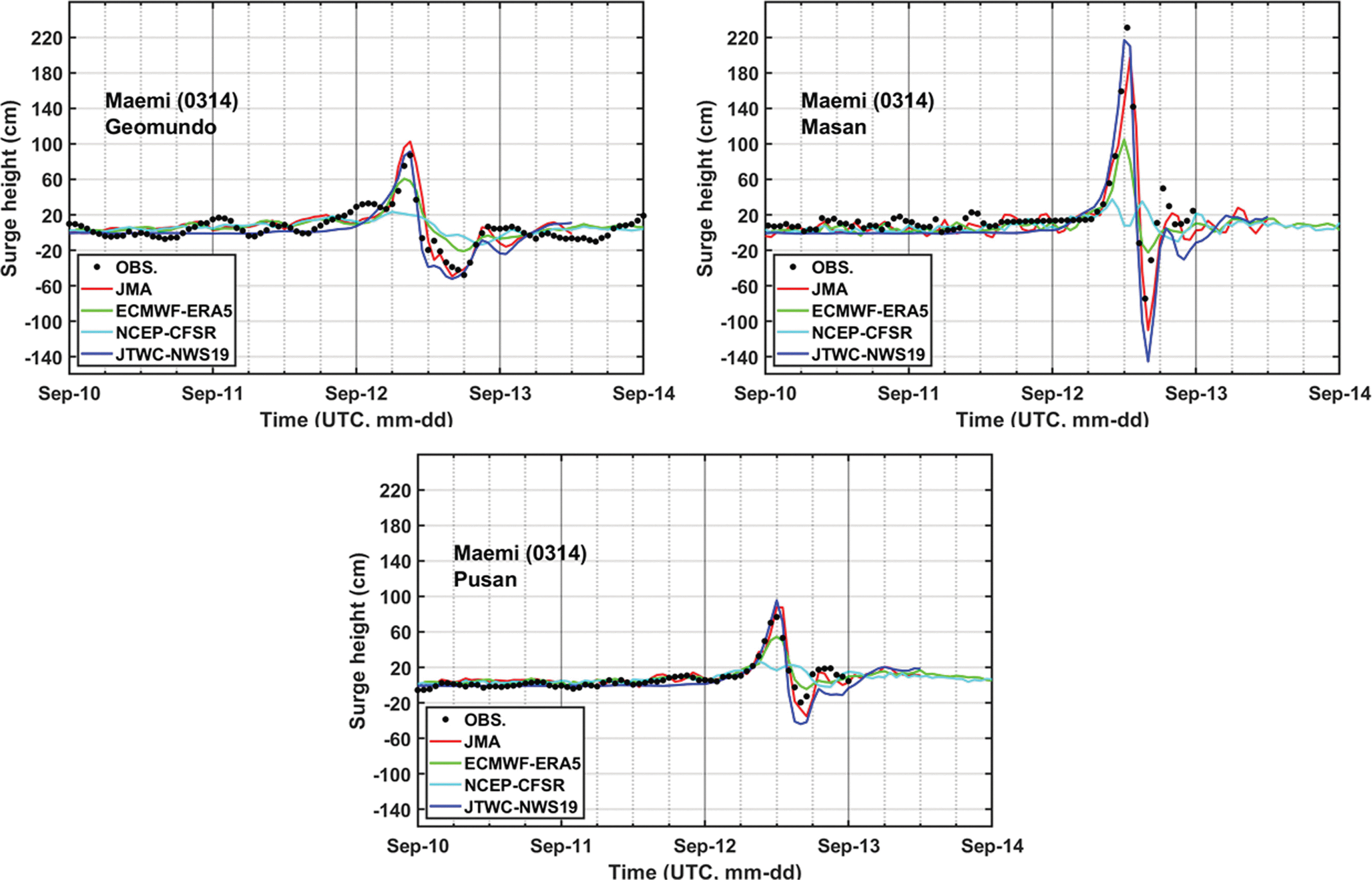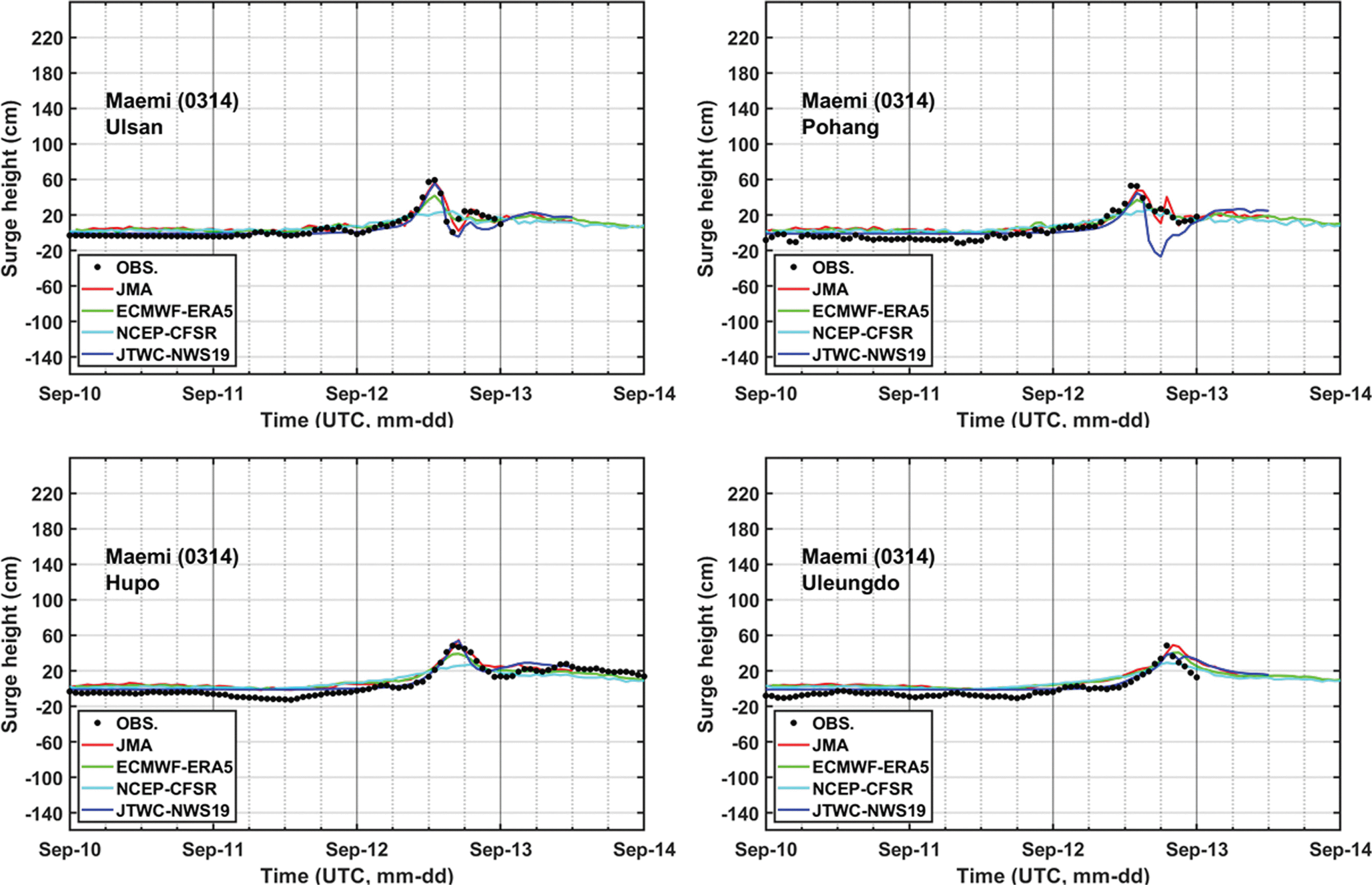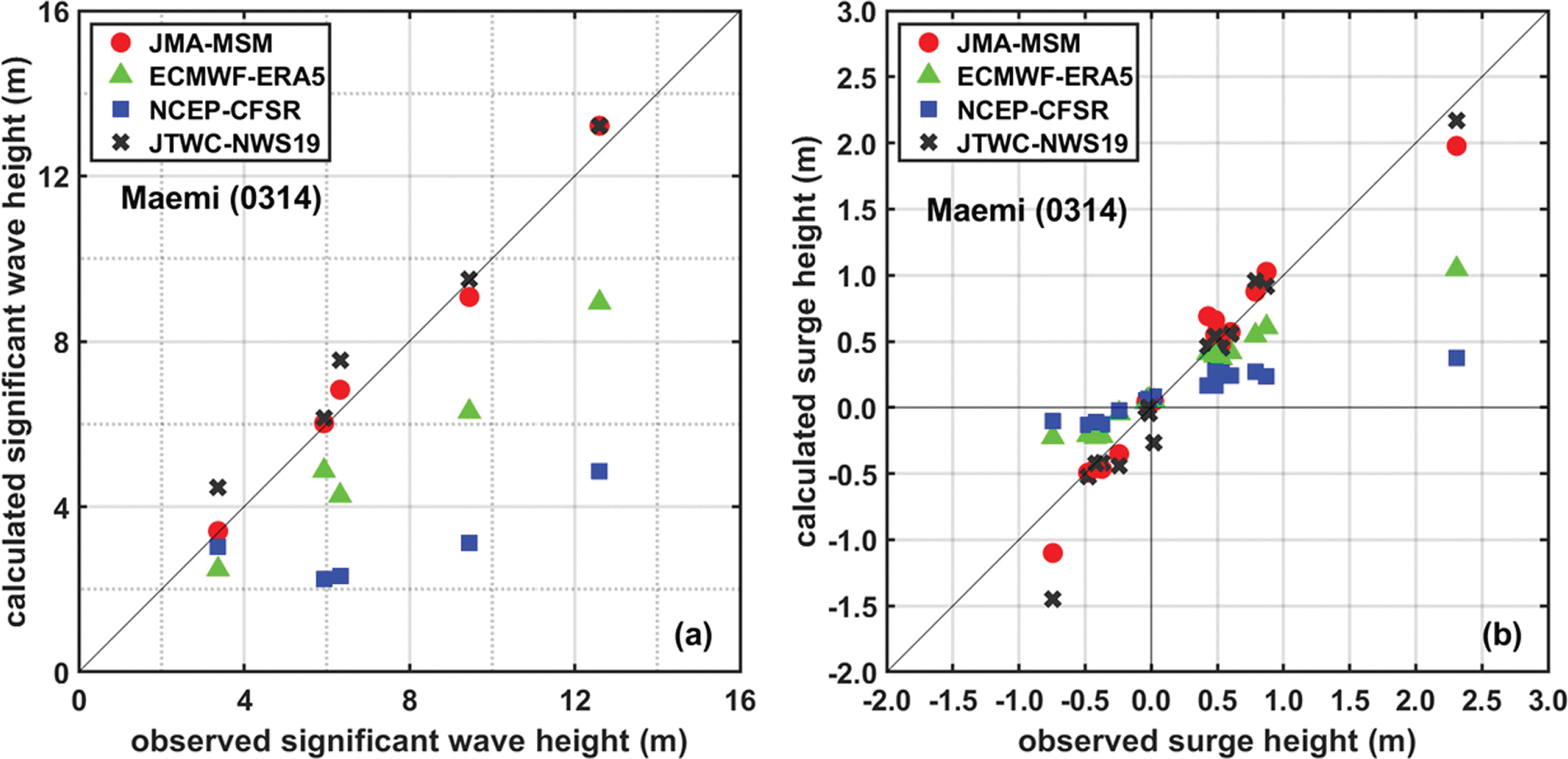Akbar, M, Kanjanda, S, Musinguzi, A (2017). Effect of bottom friction, wind drag coefficient, and meteorological forcing in hindcast of Hurricane Rita storm surge using SWAN + ADCIRC model, J. Mar. Sci. Eng, 5(38):10.3390/jmse5030038.

Booij, N, Ris, RC, Holthuijsen, LH (1999). A third-generation wave model for coastal regions, Part I, Model description and validation, J Geophys Res, 104(C4):7649-7666.

Hasselmann, K. (1968). Weak-interaction theory of ocean waves, Basic Developments in Fluid Dynamics. In: Holt M, ed. New York: Academic Press, 2: p 117-182.

Hersbach, H; Coauthors (2020). The ERA5 global reanalysis, Quarterly Journal of the Royal Meteorological Society, 146, 1999-2049.

Jeong, WM (2017). Private communication.
Jeong, WM, Ryu, KH, Oh, SH, Baek, WD (2016). Trends of the storm wave appearance on the east coast analyzed by using long-term wave observation data, J of Korean Society of Coastal and Ocean Engineers, 28(2):109-115 (in Korean).

Kim, K.-M, Kim, J.-H, Ryu, H.-S, Jeong, W.-M (2007). Calculation of the wave height distribution in the vicinity of Ulsan waters using the observed data of Typhoon Maemi, J of Korean Navigation and Port Research, 31(6):479-484 (in Korean).

Komen, GJ, Hasselmann, S, Hasselmann, K (1984). On the existence of a fully developed wind sea spectrum, J. Phys. Oceanogr, 14, 1271-1285.

Korea Hydrographic and Oceanographic Agency (2012). Oceanic abnormal phenomena report, 2, (in Korean).
Korea Meteorological Administration. (2011). Typhoon white book, (in Korean).
Korea Ocean Research and Development Institution. (2005). Report on the estimation of deep-water design wave in Korea II (in Korean).
Luettich, R, Westerink, J, Scheffner, N. (1992). ADCIRC: An advanced three-dimensional circulation model for shelves, coasts, and estuaries, Report 1. Theory and methodology of ADCIRC-2DDI and ADCIRC-3DL. Vicksburg MS: Coastal Engineering Research Center.
Luettich, R, Westerink, J, Scheffner, N. (1994). ADCIRC: An advanced three-dimensional circulation model for shelves, coasts, and estuaries, Report 2. User’s manual for ADCIRC-2DDI. Vicksburg MS: Coastal Engineering Research Center.
Ministry of Oceans and Fisheries (2019). Report on the estimation of deep water design waves of Korea, 117-149 (in Korean).
Mun, J, Lee, HW, Jeon, W, Lee, S.-H (2017). Impact of meteorological initial input data on WRF simulation - Comparison of ERA-interim and FNL data, J of Environmental Science International, 26(12):1307-1319 (in Korean).

Qiao, W, Song, J, He, H, Li, F (2019). Application of different wind field models and wave boundary layer model to typhoon waves numerical simulation in WAVEWATCH III model, Tellus A: Dynamic Meteorology and Oceanography, 71(1):1657552. 10.1080/16000870.2019.1657552.

Saha, S; Coauthors (2010). The NCEP Climate Forecast System Reanalysis, Bull. Amer. Meteor. Soc, 91, 1015-1057. 10.1175/2010BAMS3001.1.

Saha, S; Coauthors (2014). The NCEP Climate Forecast System Version 2, J of Climate, 27(6):2185-2208.

Saito, K; Coauthors (2006). The operational JMA nonhydro-static meso-scale model, Monthly Weather Review, 134, 1266-1298.

Suh, SW, Kim, HJ (2012). Typhoon surge simulation on the west coast incorporating asymmetric vortex and wave model on a fine finite element grid, Journal of Korean Society of Coastal and Ocean Engineers, 24(3):166-178 (in Korean).

SWAN team (2016). SWAN User manual (SWAN Cycle III version 41.10A), Delft University of Technology, 12-20.
Tolman, HL. (1997). A new global wave forecast system at NCEP, Ocean Wave Measurements and Analysis. 2: Edge, BL, Helmsley, JM. (ASCE, p 777-786.
WAMDI group (1988). The WAM model - a third generation ocean wave prediction model, J. Phys. Oceanogr, 18, 1775-1810.
Wang, Z, Gong, Y, Cui, J, Dong, S, Wu, K (2019). Effect of the drag coefficient on a typhoon wave model, Journal of Oceanology and Limnology, 37(6):1795-1804.

WAVEWATCH III development group (2016). User manual and system documentation of WAVEWATCH III version. 4.18, MMAB Technical Note 316.


